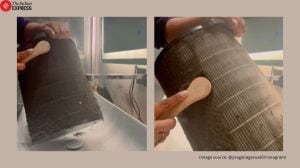Scientists who discovered HIV get 2008 Nobel
Germany’s Harald zur Hausen and French researchers Francoise Barre-Sinoussi and Luc Montagnier shared the 2008 Nobel Prize...

Germany’s Harald zur Hausen and French researchers Francoise Barre-Sinoussi and Luc Montagnier shared the 2008 Nobel Prize in medicine on Monday for discovering the AIDS virus and the role of viruses in cervical cancer.
Barre-Sinoussi and Montagnier were cited for their discovery of human immunodeficiency virus, or HIV; zur Hausen was cited for finding human papilloma viruses that cause cervical cancer, the second most common cancer among women.
The German scientist received half of the 10 million kronor prize, while the two French researchers shared the other half.
In its citation, the Nobel Assembly said Barre-Sinoussi and Montagnier’s discovery was one prerequisite for the current understanding of the biology of AIDS and its antiretroviral treatment. The pair’s work in the early 1980s made it possible to clone the HIV-1 genome.
“This has allowed identification of important details in its replication cycle and how the virus interacts with its host,” the citation said. “Furthermore, it led to development of methods to diagnose infected patients and to screen blood.”
The assembly said zur Hausen “went against current dogma” when he found that oncogenic human papilloma virus, or HPV, caused cervical cancer, the second most common cancer among women.
“His discovery has led to characterisation of the natural history of HPV infection, an understanding of mechanisms of HPV-induced carcinogenesis and the development of prophylactic vaccines against HPV acquisition,” the citation said.
Alfred Nobel, the Swede who invented dynamite, established the prizes in his will in the categories of medicine, physics, chemistry, literature and peace. The economics prize is technically not a Nobel, but a 1968 creation of Sweden’s central bank.






- 01
- 02
- 03
- 04
- 05

























